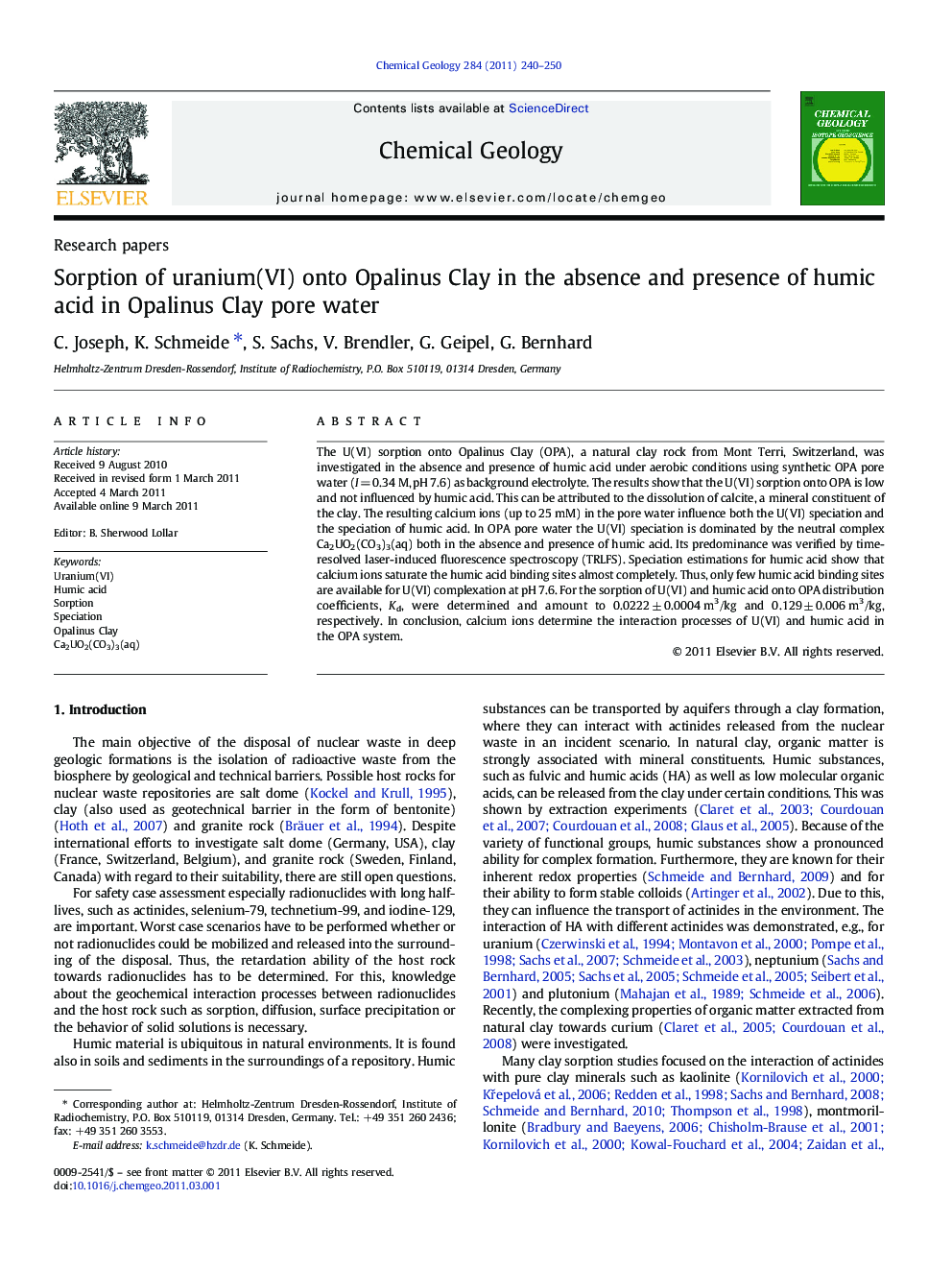| Article ID | Journal | Published Year | Pages | File Type |
|---|---|---|---|---|
| 4699780 | Chemical Geology | 2011 | 11 Pages |
The U(VI) sorption onto Opalinus Clay (OPA), a natural clay rock from Mont Terri, Switzerland, was investigated in the absence and presence of humic acid under aerobic conditions using synthetic OPA pore water (I = 0.34 M, pH 7.6) as background electrolyte. The results show that the U(VI) sorption onto OPA is low and not influenced by humic acid. This can be attributed to the dissolution of calcite, a mineral constituent of the clay. The resulting calcium ions (up to 25 mM) in the pore water influence both the U(VI) speciation and the speciation of humic acid. In OPA pore water the U(VI) speciation is dominated by the neutral complex Ca2UO2(CO3)3(aq) both in the absence and presence of humic acid. Its predominance was verified by time-resolved laser-induced fluorescence spectroscopy (TRLFS). Speciation estimations for humic acid show that calcium ions saturate the humic acid binding sites almost completely. Thus, only few humic acid binding sites are available for U(VI) complexation at pH 7.6. For the sorption of U(VI) and humic acid onto OPA distribution coefficients, Kd, were determined and amount to 0.0222 ± 0.0004 m3/kg and 0.129 ± 0.006 m3/kg, respectively. In conclusion, calcium ions determine the interaction processes of U(VI) and humic acid in the OPA system.
Research highlights► Sorption of U(VI) onto Opalinus Clay in the absence and presence of humic acid (HA). ► U(VI) speciation is dominated by Ca2UO2(CO3)3(aq) in the absence and presence of HA. ► HA speciation is dominated by the CaHA(II) complex. ► Sorption of Ca2UO2(CO3)3(aq) onto Opalinus Clay is weak and not influenced by HA.
